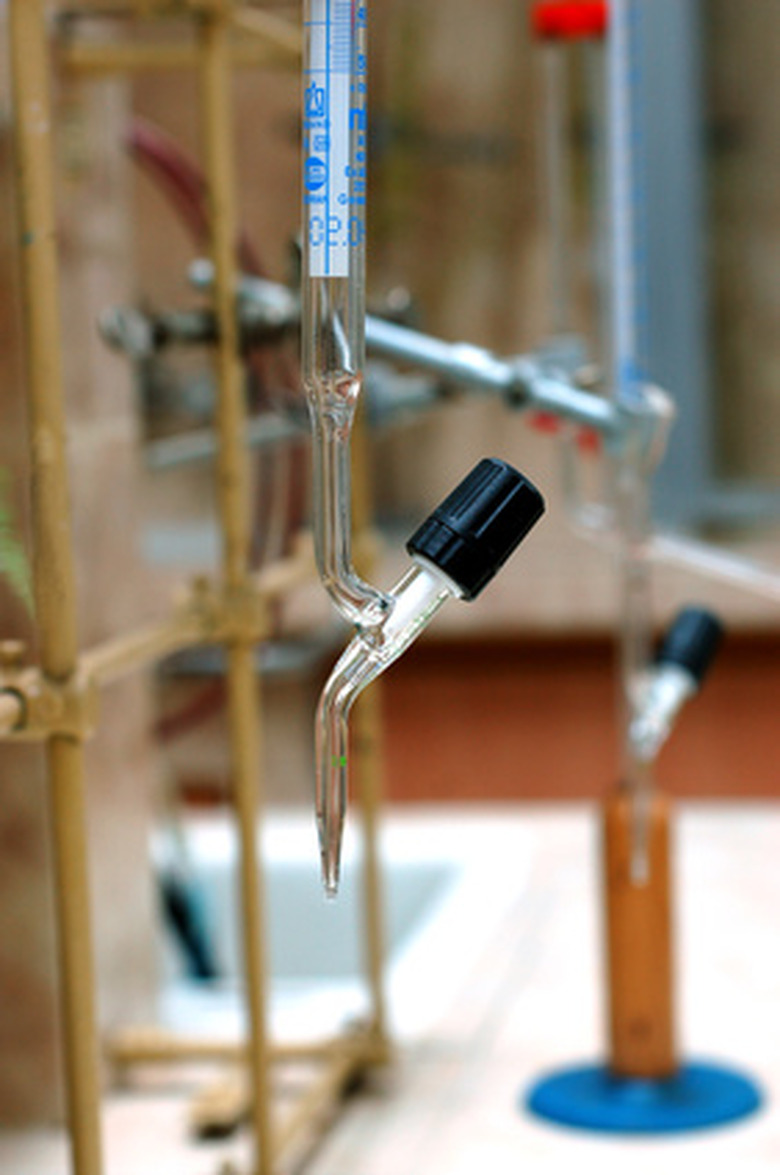How To Write A Lab Report About Titration
Titrations are standard chemistry laboratory procedures usually used to determine the unknown concentration of a substance. They involve slowly adding a reagent to a reaction mixture until the chemical reaction is complete. The completion of the reaction is usually marked by the color change of an indicator substance. The volume of reagent required to complete the reaction is precisely measured using a burette. Calculations can then be carried out to determine the concentration of the original substance.
Step 1
Complete your titration ensuring you achieve concordant results. You should have three results within 0.1 cubic centimeters of each other in order to be concordant.
Step 2
Write your introduction. For a titration, the introduction should include information about what you hope to find out and what substance or product you will be analyzing. Write about the reaction you will be using, including the equation and the conditions required. Include details of the indicator stating the expected color change and writing a brief explanation of the suitability of the chosen indicator.
Step 3
Describe details of your experimental method in the next section. Include a description of how you made up your solutions, if applicable. State the volume and concentration of any reagents used.
Step 4
Draw a table to represent the results of your titration. It is customary to write the final burette volume in the first row, the initial burette volume in the second row and the titre in the third row. The titre is calculated by subtracting the initial volume from the final volume. To indicate precision, write all your results in cubic centimeters to two decimal places, adding a zero to the end of the number if necessary. Most standard burettes allow measurement to the nearest 0.05 cubic centimeters. Include all your repeat readings in the table, and indicate which are the concordant results to be used in the calculation of the mean titre. Calculate the mean titre using the concordant results only and record it below your results table.
Step 5
Calculate your unknown using the mean titre and standard volumetric analysis methods. Lay out your calculations clearly, writing them down in a step-by-step format. This will help you to avoid mistakes, and will also ensure you are given credit for method if you make a minor error. Ensure you add the appropriate units to your answers, and use a suitable degree of precision: usually two decimal places. For guidance on completing the calculations, there are a number of online resources.
Step 6
Write your conclusion. In a titration, the conclusion is often a simple statement of the experimentally determined parameter. Depending on the aim of the titration, more detail may be required. For example, a brief discussion on whether the results fall within the expected range may be appropriate.
Things Needed
- Results from titration
- Pen
- Paper
- Calculator
Cite This Article
MLA
Mitchell, Veronica. "How To Write A Lab Report About Titration" sciencing.com, https://www.sciencing.com/write-lab-report-titration-7779005/. 24 April 2017.
APA
Mitchell, Veronica. (2017, April 24). How To Write A Lab Report About Titration. sciencing.com. Retrieved from https://www.sciencing.com/write-lab-report-titration-7779005/
Chicago
Mitchell, Veronica. How To Write A Lab Report About Titration last modified August 30, 2022. https://www.sciencing.com/write-lab-report-titration-7779005/
